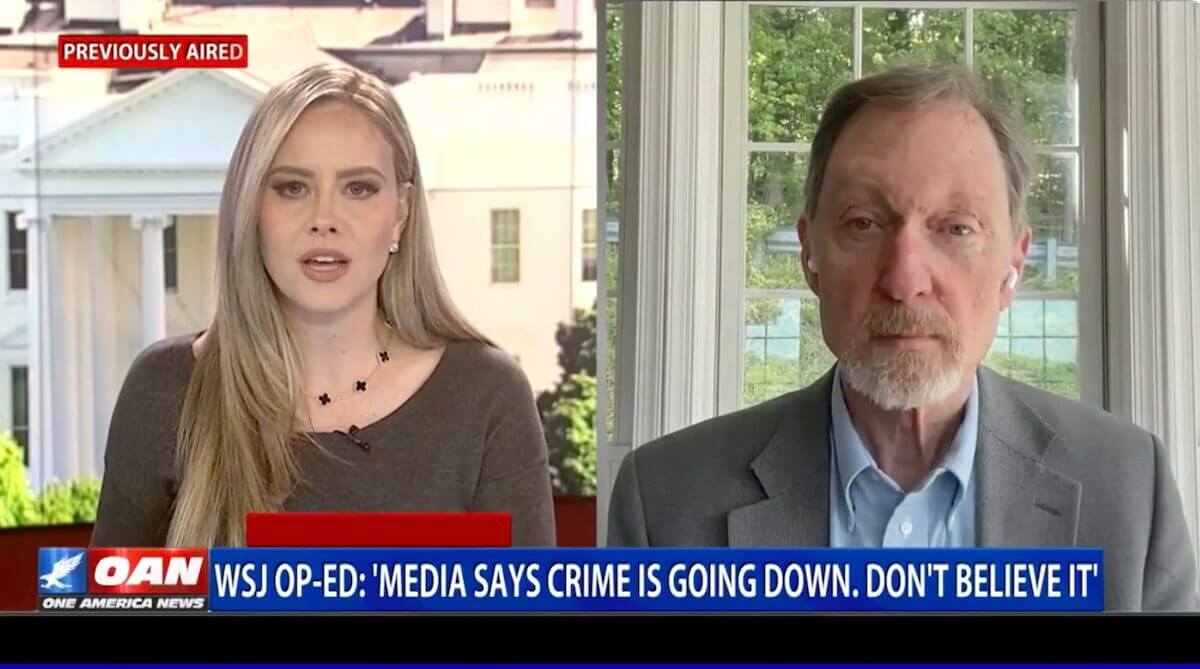Recent trends indicate a significant discrepancy in crime reporting and actual crime rates in major U.S. cities, according to Dr. John Lott, President of the Crime Prevention Research Center (CPRC).
In a recent interview with One America News, Dr. Lott explained the misinterpretation of crime statistics by mainstream media, citing his own op-ed in the Wall Street Journal.
“Mainstream media can say whatever they want; we feel it, we see it,” Lott stated, pointing out that while reported crimes seem to be decreasing, the reality experienced by citizens tells a different story.
He highlighted the use of the FBI Uniform Crime Report data by the media, which counts only crimes reported to police. However, most crimes, Lott noted, go unreported.
The National Crime Victimization Survey, which surveys about 240,000 people annually, aims to capture both reported and unreported crimes.
Dr. Lott remarked, “Over time, these measures have generally moved together, except from 2020 onwards where there have been huge gaps.”
Dr. Lott drew attention to a startling divergence between the two types of data from 2021 to 2022, where FBI data showed a 2% drop in reported crimes, whereas the victimization survey indicated a 42% increase in total crime.
He attributed this disparity in crime rates primarily to a decline in law enforcement effectiveness. As Dr. Lott stated:
So, between 2021 and 2022, for example, you saw about a 2% drop in crime reported to police according to the FBI data, but at the same time, the National Crime Victimization data showed a 42% increase in crime when you’re looking at both reported and non-reported crime. And there’s several reasons for this, but probably the simplest is just that we’ve had a collapse of law enforcement.
Further complicating the issue are the discouragements facing police officers, including excessive paperwork and policies that lead to the immediate release of arrested individuals without charges (cashless bail).
Lott emphasized the bureaucratic hurdles, such as the requirements in Chicago that police officers fill out extensive forms after every interaction, which he believes diverts their time from actual policing.
“In Chicago, every time a police officer stops and talks to somebody, they have to fill out two legal forms that take between 45 minutes to an hour and 15 minutes to fill out. So if they go and talk to four people in the morning, their whole afternoon is taken up dealing with paperwork. That effectively removes police officers from the street,” observed Lott.
The consequences of these systemic issues are profound. Dr. Lott argues that when people believe that reporting a crime will lead to no substantive action against perpetrators, they simply choose not to report.
This sentiment has been echoed by citizens across various cities, who express frustration over the lack of police response and the increasing audacity of criminals.
Amidst these challenges, Dr. Lott accused the mainstream media of portraying an inaccurate picture of the crime situation in the country. They report that crime is falling, but what people are actually seeing and experiencing tells a different story, he maintains.
This discrepancy has led to a significant shift in how Americans are responding to crime, with more individuals choosing to arm themselves as confidence in law enforcement diminishes.
Dr. Lott noted a dramatic increase in the number of concealed carry permits and the rise of constitutional carry states, where no permit is required to carry a concealed weapon.
“We did a survey last year that found that about 15.6% of likely voters in the United States either carry all the time or most of the time and that’s a three-fold increase from what Pew Research found in a survey that they did, that was similar back, in 2017,” explained Lott.
“So there’s been a big sea change and it’s exactly as you say, people see that law enforcement’s collapse, they see that if they call 911 it’s very likely that the police aren’t going to be able to respond and it’s kind of made it even more obvious to them that they have to be the first line of response and maybe the only line of response to criminals,” he added.
Dr. Lott’s insights offer a crucial perspective on the challenges facing crime reporting and law enforcement in America, urging a reevaluation of how crime data is interpreted and addressed by both the media and law enforcement agencies.
It also raises the question, what are you experiencing in your neighborhoods? Is crime on the rise?
*** Buy and Sell on GunsAmerica! All Local Sales are FREE! ***
Read the full article here


